Chimie et Société a organisé le symposium « Chemistry and Society » parmi les 35 proposés en juillet dernier à l’occasion du Congrès IUPAC 2019 qui célébrait le centenaire de la création de l’IUPAC* à Paris.
* L’Union internationale de chimie pure et appliquée (IUPAC pour International Union of Pure and Applied Chemistry) a été fondée en 1919 par des chimistes universitaires et industriels. L’IUPAC s’intéresse aux progrès en chimie, chimie physique, biochimie, etc. Elle a pour membres des sociétés nationales de chimie. C’est l’autorité reconnue pour le développement de règles à adopter pour la nomenclature, les symboles et la terminologie des éléments chimiques et de leurs dérivés, les méthodes normalisées pour la mesure, les poids atomiques et autres données.
Le symposium « Chemistry and Society » comprenait trois sessions :
S4.1 : Chemistry and Society – current knowledge
S4.2 : Scientific outreach vs. teaching, perception and communication in chemistry
S4.3 : Chemistry and Society – intensifying the dialogue
En partenariat avec le rectorat de l’académie de Paris, 17 conférences ont été enregistrées au cours des sessions 4.1 et 4.2.
S4.1 Chemistry and Society: current knowledge
Ryôji NOYORI Nobel Laureate in Chemistry 2001, Nagoya University, Center for Research and Development Strategy, Japan Science and Technology Agency
A message from Professor Ryôji Noyori
Christophe SENE, Stepan
A continuum from hard legislation to soft legislation to social pressure: Is chemistry free to innovate under this straitjacket? How to dialogue between stackholders?
Diane PURCHASE, Middlesex University, UK
E-waste - an emerging 21st century global grand challenge: Global occurence, chemical properties and ecological impacts.
Leonardo PANTOJA MUNOZ, Middlesex University, UK
Microplastics and wet-wipes: Should they be flushed into the sewer system?
Liz HARRIMAN, TURI, University of Massachusetts
Toxics Use Reduction - reducing hazard benefits society and the value chain.
Michel CLAESSENS, European Commission, Directorate for Energy, ITER
On behalf of Martin W. BAUER, London school of economics
The public understanding of chemistry, does it differ from perceptions of science in general?
Nicolas CUDRE-MAUROUX, Solvay group
Facts, science and emotions.
Rogiero TELES, Instituto Federal do Maranhão - IFMA, São Luís, Brazil
Regional chemistry Council of the 11th region as a way to ensure the supply of good products and services to society.
S4.2 Scientific outreach vs teaching, perception and communication in chemistry
Carla MORAIS, Universidade do Porto
Chemistry by the letter: Etymology as root and route for science communication.
Corinne ARROUVEL, Universidade federal de São Carlos, Sorocaba
The wave-matter duality in music
Didier PERRET, Chimiscope, Université de Genève
Needs of a new chemist's role model for novice Citizen.
Elisabeth RASEKOALA, African Gong
Advancing chemistry education and communication in Africa : Challenges and prospects for transformation in policy, practice and capacity-building.
Fabienne CRETTAZ VON ROTEN, University of Lausanne
Chimists' public engagement in Switzerland: representations, practices, incentives and barriers.
Karine BICHET-RAMON, académie de Toulouse and IRES
Critical skills for students
Martin WALKER, State University of New York
Making chemistry open and affordable through technology and Open Educational Resources (OER)
Polina MIKHEL, Université de Lorraine
Towards a multilingual resource on the language of chemistry: A lexical network approach.
Awards ceremony
Ganna LYASHENKO and Jean-François NIERENGARTEN
Artwork competition of Chemistry: A European Journal celebrating the 150th year of the Periodic Table.


